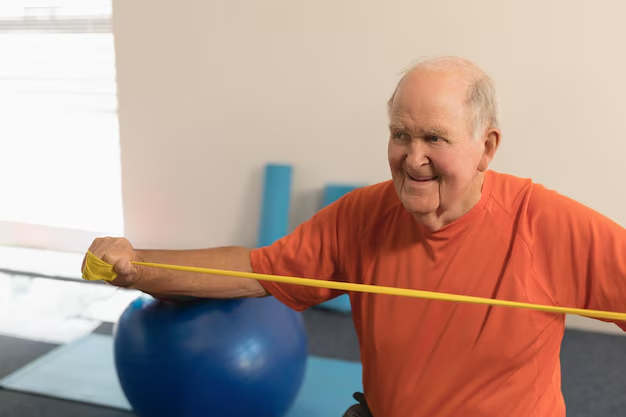Understanding Parkinson's Disease: Exploring Causes, Symptoms, and Management
Parkinson’s disease is a term that often surfaces in discussions about neurological conditions. With its complex nature and widespread implications, it prompts many questions and concerns. Let’s delve into what Parkinson’s disease truly entails, its symptoms, potential causes, and how individuals can manage this condition to maintain quality of life.
What is Parkinson's Disease?
Parkinson’s disease is a progressive neurological disorder that affects movement. It is characterized by the degeneration of dopamine-producing neurons in the brain. Dopamine is a crucial neurotransmitter responsible for smooth and coordinated muscle movements.
Key Characteristics
- The disease commonly manifests after the age of 60, although early-onset Parkinson’s can occur.
- Men are more likely to develop Parkinson’s than women.
- While there is currently no cure, treatment options are available to manage symptoms and improve quality of life.
Recognizing Parkinson's Symptoms
Symptoms of Parkinson’s disease can vary significantly from person to person, and they usually develop gradually. Here are the primary symptoms to be aware of:
Motor Symptoms
- Tremor: Often begins in a hand or fingers, usually noticeable at rest.
- Bradykinesia (slowed movement): Makes simple tasks difficult and time-consuming.
- Muscle Rigidity: Can occur in any part of the body, leading to muscle pain.
- Postural Instability: Results in a stooped posture and impaired balance.
- Gait Disturbances: Short, shuffling steps or freezing episodes can occur.
Non-Motor Symptoms
- Cognitive Changes: Issues with memory, problem-solving, and other thinking skills.
- Mood Disorders: Depression and anxiety are common.
- Sleep Disturbances: Includes insomnia or excessive daytime sleepiness.
- Autonomic Dysfunction: Issues with blood pressure regulation, digestion, and bladder control.
Potential Causes and Risk Factors
The exact cause of Parkinson’s disease remains unclear, but several factors have been identified that may contribute to its development:
Genetic Factors
- Family History: Having a close relative with Parkinson’s increases risk.
- Genetic Mutations: Specific genes have been linked to the disease.
Environmental Factors
- Toxin Exposure: Pesticides and herbicides may increase risk.
- Heavy Metals: Exposure to elements like manganese has been associated with Parkinson’s.
Lifestyle and Other Medical Conditions
- Age: Risk increases with age, especially after 60.
- Sex: Men are more often diagnosed than women.
- Head Trauma: History of significant head injuries may be a risk factor.
Diagnosis of Parkinson’s Disease
Diagnosing Parkinson’s disease can be complex as there is no specific test for it. A diagnosis is generally based on medical history, a review of symptoms, and neurological examinations.
Steps to Diagnosis
- Clinical Evaluation: Assessment of motor and non-motor symptoms.
- Imaging Tests: MRI and DaTscan can assist in the diagnosis by ruling out other conditions.
- Response to Medication: Observing improvement with Parkinson’s medication can support a diagnosis.
Managing Parkinson's Disease: Therapies and Treatment Options
While the progressive nature of Parkinson’s disease poses challenges, various treatments and lifestyle adjustments can help manage the symptoms effectively.
Medications
- Levodopa: The most common treatment, helps replenish dopamine.
- Dopamine Agonists: Mimic the function of dopamine in the brain.
- MAO-B Inhibitors: Prevent the breakdown of brain dopamine.
- COMT Inhibitors: Extend the effect of Levodopa therapy.
Non-Pharmacological Therapies
- Physical Therapy: Focuses on flexibility, balance, and strength training.
- Occupational Therapy: Assists in daily living activities to maintain independence.
- Speech Therapy: Addresses speech changes and aids swallowing difficulties.
Surgical Interventions
- Deep Brain Stimulation (DBS): Delivers electrical impulses to brain areas involved in motor control, reducing symptoms.
Lifestyle Modifications
- Regular Exercise: Enhances mobility and overall health.
- Healthy Diet: Focuses on balanced nutrition to support bodily functions.
- Support Systems: Family, friends, and support groups can provide emotional help.
Living with Parkinson's Disease: Practical Tips
Living with Parkinson’s requires adaptability and a proactive approach to symptom management. Here are practical tips to enhance daily living:
Adopting a Routine
- Consistency: Establish a regular routine to manage time effectively.
- Scheduled Medication: Taking medication at the same time every day increases efficacy.
Home Adjustments
- Safety Measures: Install grab bars and make necessary adjustments for accessibility.
- Declutter: Minimize hazards for safer movement throughout the home.
Emotional and Mental Health
- Mindfulness Practices: Engage in meditation or yoga to reduce stress.
- Professional Counseling: Talk therapy can aid in coping with mood-related symptoms.
Promising Research and Future Directions
Research in Parkinson’s disease is ongoing, aiming to uncover new treatments and ultimately a cure. Innovations in genetic research, stem cell therapy, and neuroprotective strategies hold promise.
Cutting-Edge Research Areas
- Gene Therapy: Targeting genetic mutations to prevent or reverse effects.
- Biomarker Identification: Developing tests for earlier diagnosis and tailored treatments.
- Advanced Drug Delivery Systems: Enhancing medication efficacy through novel delivery methods.
In the journey through understanding and managing Parkinson’s disease, knowledge is a powerful ally. By recognizing symptoms early, seeking medical guidance, and adopting a comprehensive management plan, individuals can lead fulfilling lives despite the challenges posed by Parkinson’s. Remember, the role of support networks—both personal and professional—cannot be overstated in maintaining emotional well-being and resilience.
Quick Summary of Practical Tips for Parkinson's
- 🕑 Routine: Keep a consistent schedule for daily activities and medication.
- 🏋️ Exercise: Engage in regular physical activity like walking or stretching.
- 🍎 Nutrition: Follow a balanced diet rich in vegetables, fruits, and whole grains.
- 🛠️ Home Safety: Install grab bars, remove tripping hazards, and ensure adequate lighting.
- 🧘 Stress Management: Incorporate relaxation techniques into your approach.
- 👥 Support Groups: Connect with others through support groups for shared experiences and emotional strength.
- 🩺 Medical Check-ups: Regularly consult healthcare practitioners to adjust treatment plans as necessary.

Related Articles
- Are There Environmental Causes Of Parkinsons
- Can Alcohol Cause Parkinson's
- Can Concussions Cause Parkinson's
- Can Females Get Parkinson Disease
- Can Head Trauma Cause Parkinson's
- Can Parkinson Disease Cause Dizziness
- Can Parkinson's Affect Eyesight
- Can Parkinson's Affect Memory
- Can Parkinson's Affect Speech
- Can Parkinson's Affect Vision